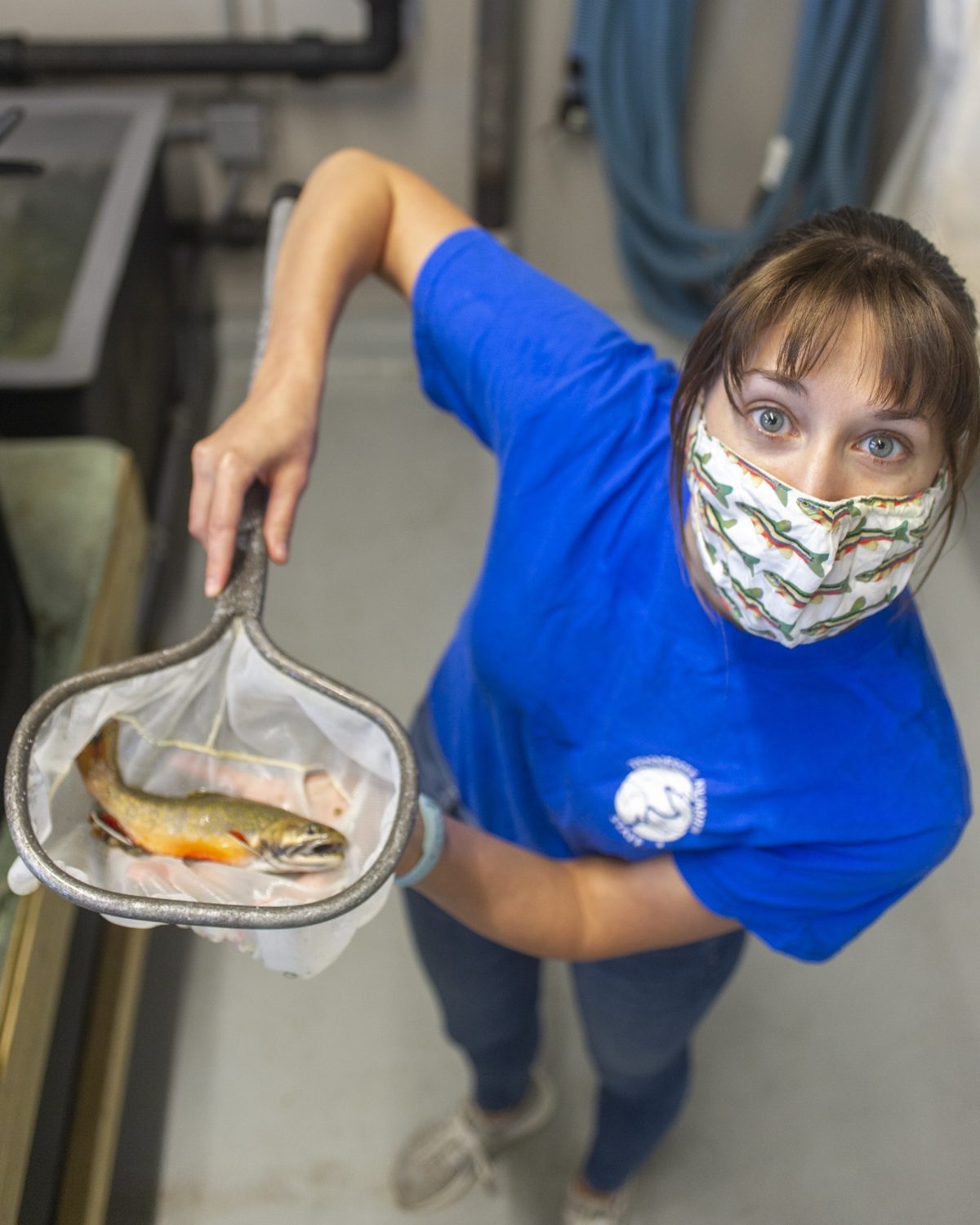Chattanooga, Tenn. (Nov. 19, 2020) – At a time when many organizations have cinched their belts and curbed spending, Trout Unlimited just provided another round of critical funding to the Tennessee Aquarium’s effort to restore Tennessee’s only native trout species.
Since 2013, Trout Unlimited’s Appalachian chapter has funded the Tennessee Aquarium Conservation Institute’s propagation of Southern Appalachian Brook Trout. This golden-speckled, red-finned game fish is the only trout species native to the southern reaches of the Appalachian Mountains.
Despite the many challenges brought on by Covid-19, this year’s $11,168 grant is only about $800 shy of the organization’s record contribution of $11,950 in 2019. To date, Trout Unlimited’s grants have provided more than $68,000 to the program. These funds are possible thanks to the sale of special Brook Trout-themed Tennessee license plates.
With this most recent grant, Trout Unlimited has provided more than $11,000 to fuel the Conservation Institute’s effort for three years running. The work to spawn, raise and eventually release juvenile Southern Appalachian Brook Trout into the wild would not be possible without this funding, says Meredith Harris, the Aquarium’s reintroduction biologist.
“Their support is everything,” Harris says. “The amazing people at Trout Unlimited are conservation heroes in their own right.”
“Beyond financial contributions, the anglers with Trout Unlimited are some of the most knowledgeable people on wild Brook Trout history. They do a lot of on-the-ground restoration work too, such as volunteering with biologists during non-native trout removal and Brook Trout releases.”
Lovingly called “Brookies” by anglers and scientists alike, the Brook Trout was once found in streams all along the eastern United States, from the Southern Appalachians into Canada. The species’ southern strain — the Southern Appalachian Brook Trout — is genetically distinct from northern populations.
By the latter half of the 20th century, however, Brookies had disappeared from much of their historic range. Currently, the species occupies just a fraction of the waterways in which it used to thrive.
In the 1980s, the Tennessee Wildlife Resources Agency began the marathon march to restoring Brookies to southern waterways. In 2012, the Aquarium joined this effort by lending its facilities to spawn, hatch, raise and release juveniles (“fingerlings”).
With the release of this year’s class of propagated fish, the restocking effort has seen more than 2,200 Brook Trout returned to their native waters. The money contributed by Trout Unlimited funds every aspect of the restoration effort, from the collection and spawning of wild adult broodstock in the fall to the release of juveniles each spring.
This year, the restoration of the Southern Appalachian Brook Trout reached a significant milestone.
Wildlife managers observed wild spawning at Little Stony Creek, a release site where efforts had been concentrated for several years. With this crucial sign that the creek’s Brook Trout population was self-sustaining, stocking began on Shell Creek, a nearby stream several ridges removed from Little Stony. Additional work will soon begin on stocking another location, North Fork Tellico, a historical Southern Appalachian Brook Trout stream in the Cherokee National Forest.
“These fish will be stocked in the Tellico watershed in a wilderness area that was home to non-native Rainbow Trout until they were wiped out by drought,” says Steve Fry, the president of Trout Unlimited’s Appalachian Chapter. “The Southern Appalachian Brook Trout will have a better chance of survival. This is their natural home, and they are better suited to this location.”
During a year fraught with derailments and unexpected turns, all signs point to the propagation program continuing to move in the right direction, Harris says.
“Since I began working with this program, we have — tentatively — successfully restored Brook Trout to one stream and are on to the next,” she says. “It feels like progress to me!”
For more information about the Tennessee Aquarium Conservation Institute, visit tnaqua.org/conserve/
Additional information about the Appalachian Chapter of Trout Unlimited can be found at appalachiantu.org/

Fig. 2 Meredith Harris with Brook Trout